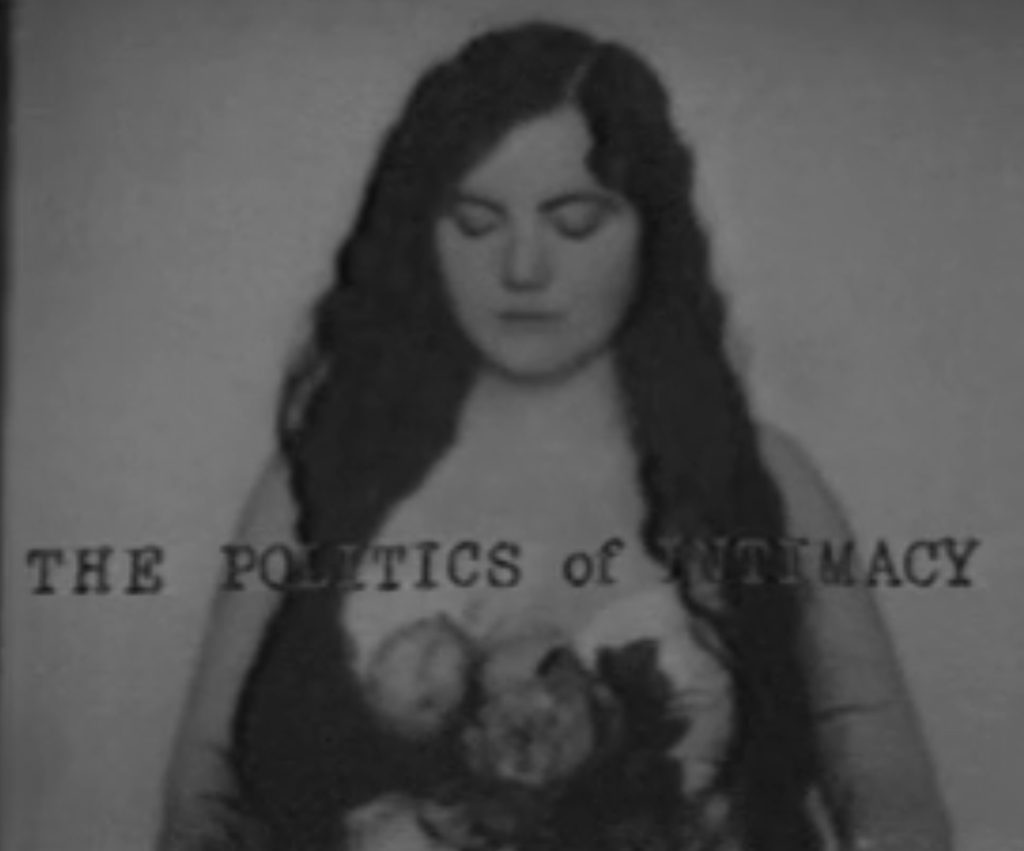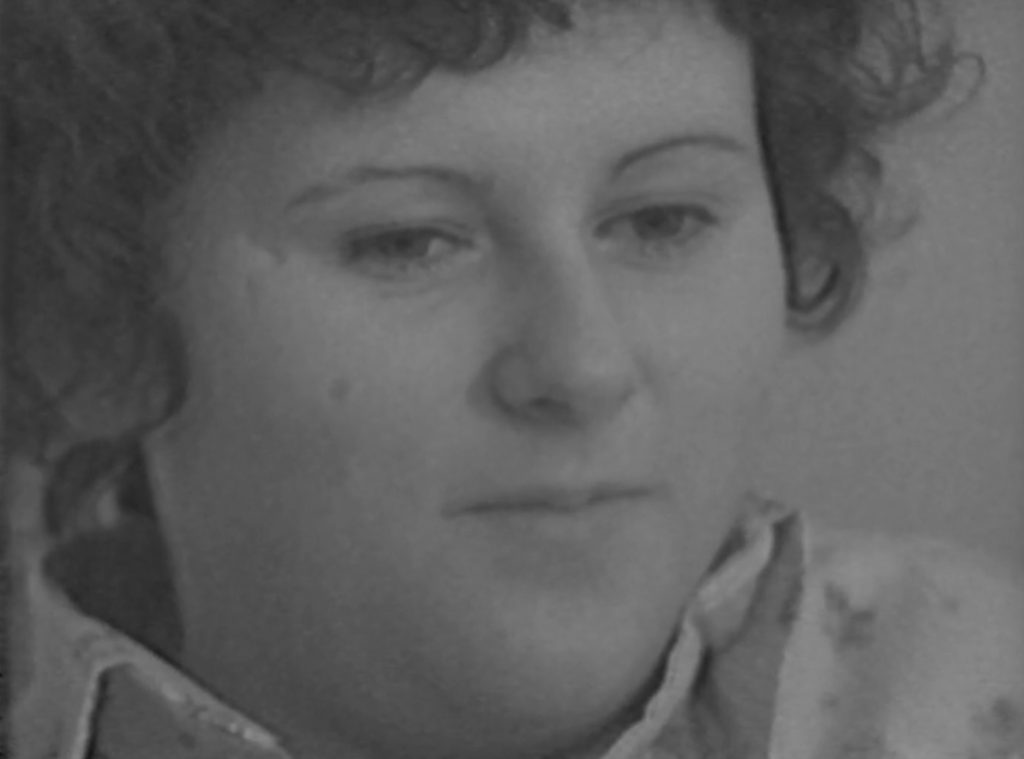An ongoing series reflecting on our favorite videos from the Resurrecting Guerrilla Television project.

In 2021, Media Burn, along with the University of Chicago and other partners, began the “Resurrecting the 1970s Guerrilla Television Movement” project, which is funded by the Council on Library and Information Resources. That grant has funded the digitization, cataloging, and sharing of hundreds of essential tapes from the early history of video, with hundreds more to come. These tapes range from abstract visual studies to documentaries to home movies. They include the work of major artists like Julie Gustafson, Jane Veeder, Eleanor Boyer, Barbara Sykes, Pat Lehman, and Nancy Cain and vital organizations like People’s Video Theater/Survival Arts Media, TVTV, Global Village, Kartemquin Films, and Ant Farm as well as anonymous or uncredited videomakers documenting protest marches and landlord neglect and the aftermath of strip mining in rural Appalachia, or, simply, goofing around with the camera. These tapes are all crucial parts of our cultural heritage, stories told by people who never saw their voices reflected in mainstream corporate media. This is “the people’s television” – a version of the media that encouraged active participation and that gave voice to the concerns and interests of ordinary citizens.
Video is an incredibly fragile medium that begins to deteriorate after only a couple of decades, and many – if not most – tapes from the 1970s have experienced some level of damage or decay. Media Burn is working tirelessly to ensure these videos will endure and that their contents will be available to the public, often for the first time.
This newsletter is part of an ongoing series from curator Adam Hart highlighting some of our favorite videos from the Guerrilla Television project. You can browse the full selection of videos here – a list that will continue to be updated as tapes are digitized and logged. Previous newsletters have been written about Eleanor Boyer, Terra Levin, and Jeanne Meyers documentary Rugby Women and Pat Lehman’s image processing classic Video Vitae.
This edition’s video: The Politics of Intimacy, by Julie Gustafson. All of Julie’s work can be found here.
In the earliest years of video, there was perhaps no organization more committed to teaching people how to make videos than Global Village. Founded in 1969 by documentarian John Reilly and sculptor/kinetic artist Rudi Stern, Global Village was at the center of New York’s fledgling video scene, hosting screenings and immersive, multi-channel video events. And, very quickly, they started holding videomaking workshops, first on their own and then through the New School.
Global Village’s “alumni” from those first few years include a number of figures who would be central to the Guerrilla Television movement, and launched a handful of remarkable collaborations and co-productions, including the documentaries Transsexuals, Lifestyles: An Experiment in Feedback, The Irish Tapes, and Julie Gustafson’s The Politics of Intimacy.
Gustafson would soon begin collaborating with Reilly, as a videomaker, as a curator for the long-running Global Village Documentary Festival, and as co-director of the organization. She would go on to direct or co-direct a number of extraordinarily powerful, delicately observed documentaries – including the astonishing Casting the First Stone, about the fight over an abortion clinic outside of Philadelphia, and the lovely Giving Birth: Four Portraits. Her films were often portraits of women and girls in which her subjects were granted the space to tell their own stories, to articulate the things that were most important to them. They are, universally, hugely empathetic movies, dedicated to understanding their subjects, intellectually and emotionally.
The Politics of Intimacy remains, however, perhaps Gustafson’s most important and influential work. In it, she gives ten women a platform to speak about a subject that you’d never find anywhere on network television: their own sexual pleasure. It was an idea that came straight out of the Women’s Liberation movement, a sort of virtual consciousness-raising session in which women shared their experiences – good, bad, and traumatizing – and their desires. They reflect on what they enjoy and try to articulate what exactly they’re feeling during their most intense moments of arousal and stimulation.
What’s important about the documentary is not just that it allows women to speak about a subject that was absolutely taboo in the broader culture – again, not just sex but female pleasure – but that it weaves them together into a conversation. Most of the women were recorded separately, but Gustafson edits them together in a way that powerfully emphasizes their shared experiences, their shared emotions and sensations. It shows how silly and damaging the mainstream discourse around women’s sexuality has been, but also how little the way that it’s depicted in media has to do with the lived reality of women. Gustafson and her subjects treat sex as important, but also ordinary – the sort of thing that everyone should feel comfortable talking about.
In the clip embedded above, women – including women who don’t think of themselves as gay – discuss attraction to other women and reflect on societal notions of femininity. Theresa, the best friend of Julie’s sister Mona, speaks about the damage caused by stereotypical expectations for young women, and about how she feels excluded and alienated because she can’t live up to them in her appearance or her behavior. Her reflections are raw and filled with familiar adolescent angst, but they’re also remarkably wise and insightful.
There’s a brief moment near the end of the clip when, after baring her soul about her own insecurities, Theresa turns to Mona and asks: “Do you ever go through that?” That exchange powerfully illustrates why The Politics of Intimacy remains vital fifty years later: this is a video about how important it is for women to speak for themselves, and to speak to each other.
Watch the full documentary here.


0 Comments
You can be the first one to leave a comment.